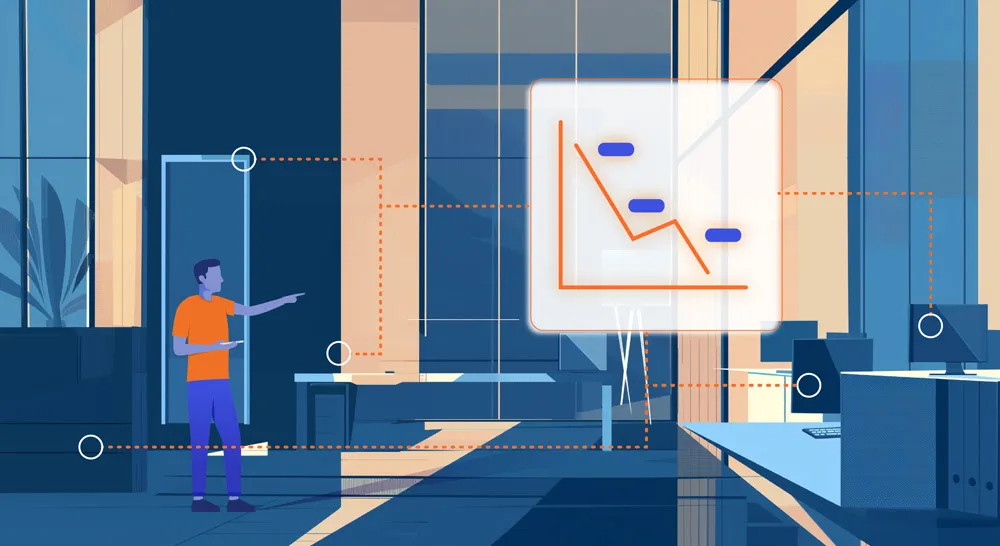
Phases of Incident Response: Essential Steps for a Comprehensive Response Plan
As the summer sun sets and the chill of fall approaches, businesses often shift their focus from vacation mode to the high-alert status needed for the upcoming cybersecurity threats. Fall is notorious for a spike in cyber attacks, making it the ideal time to review and strengthen your incident response plan. At CYPFER, we understand that preparation is key to mitigating the impact of these threats. Let’s explore the essential phases of incident response and why summer is the perfect time to get your plan in place.
1. Preparation: Laying the Groundwork During the Summer
Summer is a time of relative calm in the business world, making it the perfect season to invest in strengthening your cybersecurity defenses. The preparation phase is all about proactive measures. This is when you should be assessing your current security posture, identifying potential vulnerabilities, and training your team on the latest cybersecurity best practices.
Why Summer? The downtime during the summer months allows your team to focus on enhancing your incident response plan without the distractions of peak business activities. By the time fall arrives, you’ll be well-prepared to face the onslaught of cyber threats that tend to increase during this period.
Scenario Example: Imagine it’s late October. Your business is in full swing as you approach the holiday season, and suddenly, an employee clicks on a phishing email. Within hours, your network is compromised, and sensitive data is at risk. Without a solid incident response plan, the attack could spread rapidly, leading to significant financial and reputational damage. However, because your team prepared during the summer, the threat is quickly identified, contained, and eradicated, allowing your business to recover swiftly with minimal disruption.
2. Identification: Recognizing the Signs of an Attack
The identification phase is critical in detecting and recognizing any indicators of compromise. Early detection can mean the difference between a minor incident and a full-blown crisis. With the right preparation, your team can quickly identify unusual activities, whether it’s a phishing attempt, a malware infection, or a network breach.
At CYPFER, our advanced threat detection systems and expert analysts work around the clock to ensure that no threat goes unnoticed. Our real-time monitoring tools are designed to catch even the most subtle signs of an attack, allowing for immediate action.
3. Containment: Stopping the Threat in Its Tracks
Once a threat is identified, the next step is to contain it. The goal here is to limit the damage and prevent the attack from spreading to other parts of your network. Containment strategies vary depending on the nature of the threat but may include isolating affected systems, shutting down compromised accounts, and blocking malicious IP addresses.
Our team at CYPFER is well-versed in containment strategies, ensuring that threats are quickly neutralized before they can escalate. As the largest recovery firm in the world, we provide immediate response services to help you contain and control any cyber attack, minimizing its impact on your business.
4. Eradication: Removing the Threat
After containment, it’s crucial to completely remove the threat from your environment. This phase involves identifying the root cause of the attack, eliminating all traces of malicious activity, and ensuring that your systems are clean and secure.
CYPFER’s incident response experts work diligently to eradicate threats, using cutting-edge tools and techniques to ensure that your network is fully restored to its pre-incident state. Our global reach and unmatched expertise allow us to handle incidents anywhere in the world without outsourcing any part of the process. This ensures that your recovery is managed by our trusted, in-house experts from start to finish.
5. Recovery: Restoring Normal Operations
Once the threat is eradicated, the focus shifts to recovery. This phase involves restoring affected systems and data, verifying the integrity of your backups, and returning your business to normal operations. A well-prepared recovery plan can significantly reduce downtime and business disruption.
With CYPFER by your side, your recovery process is smooth and efficient. We help you restore operations quickly while ensuring that your systems are fortified against future attacks. Our commitment to Cyber Certainty™ means that we are there with you every step of the way, providing the assurance that your business is in the best possible hands.
6. Lessons Learned: Continuous Improvement
The final phase of incident response is often the most overlooked—learning from the incident. This involves conducting a thorough post-incident analysis to identify what worked, what didn’t, and how your incident response plan can be improved. The insights gained from this analysis are invaluable in strengthening your defenses against future attacks.
CYPFER not only helps you recover from cyber incidents but also assists in refining your incident response strategy. We provide detailed reports and recommendations to help you enhance your cybersecurity posture, ensuring that your business is always prepared for the next threat.
Cyber Certainty™: Why Choose CYPFER for Your Incident Response?
At CYPFER, Cyber Certainty™ is more than a slogan—it’s our commitment to providing unparalleled protection and recovery services to businesses worldwide. As the largest recovery firm globally, we have the resources, expertise, and experience to handle even the most complex cyber incidents. We don’t outsource any part of our process, ensuring that your business is protected and recovered by our team of in-house experts. Our global presence means we’re ready to respond wherever and whenever you need us, 24/7.
Incident Response Checklist: Are You Prepared?
To ensure your business is ready to face the fall cyber threats, here’s a quick checklist to guide your preparation:
- Review and Update Your Incident Response Plan: Ensure your plan is current and addresses the latest threats.
- Conduct a Risk Assessment: Identify potential vulnerabilities and areas of improvement.
- Train Your Team: Provide cybersecurity training to all employees, focusing on recognizing and responding to threats.
- Test Your Backup Systems: Regularly test your backups to ensure data can be restored in the event of an attack.
- Implement Advanced Threat Detection Tools: Invest in tools that provide real-time monitoring and alerts.
- Establish Clear Communication Channels: Ensure there’s a clear process for reporting and communicating during an incident.
- Engage with CYPFER: Partner with us for proactive incident response services, so you’re not alone when a crisis hits.
This summer, take the time to prepare. As the fall cyber attack season approaches, ensure your business is fortified with a comprehensive incident response plan. Choose CYPFER as your trusted partner in cyber defense, and gain the Cyber Certainty™ that comes with knowing you’re protected by the best in the industry.
Your Complete Cyber Security Partner:
Every Step, Every Threat.
At CYPFER, we don’t just protect your business—we become part of it.
As an extension of your team, our sole focus is on cyber security, ensuring your peace of mind. From incident response and ransomware recovery to digital forensics and cyber risk, we integrate seamlessly with your operations. We’re with you 24×7, ready to tackle threats head-on and prevent future ones.
Choose CYPFER, and experience unmatched dedication and expertise. Trust us to keep your business secure and resilient at every turn.

Get Cyber Certainty™ Today
We’re here to keep the heartbeat of your business running, safe from the threat of cyber attacks. Wherever and whatever your circumstances.
Contact CYPFER





